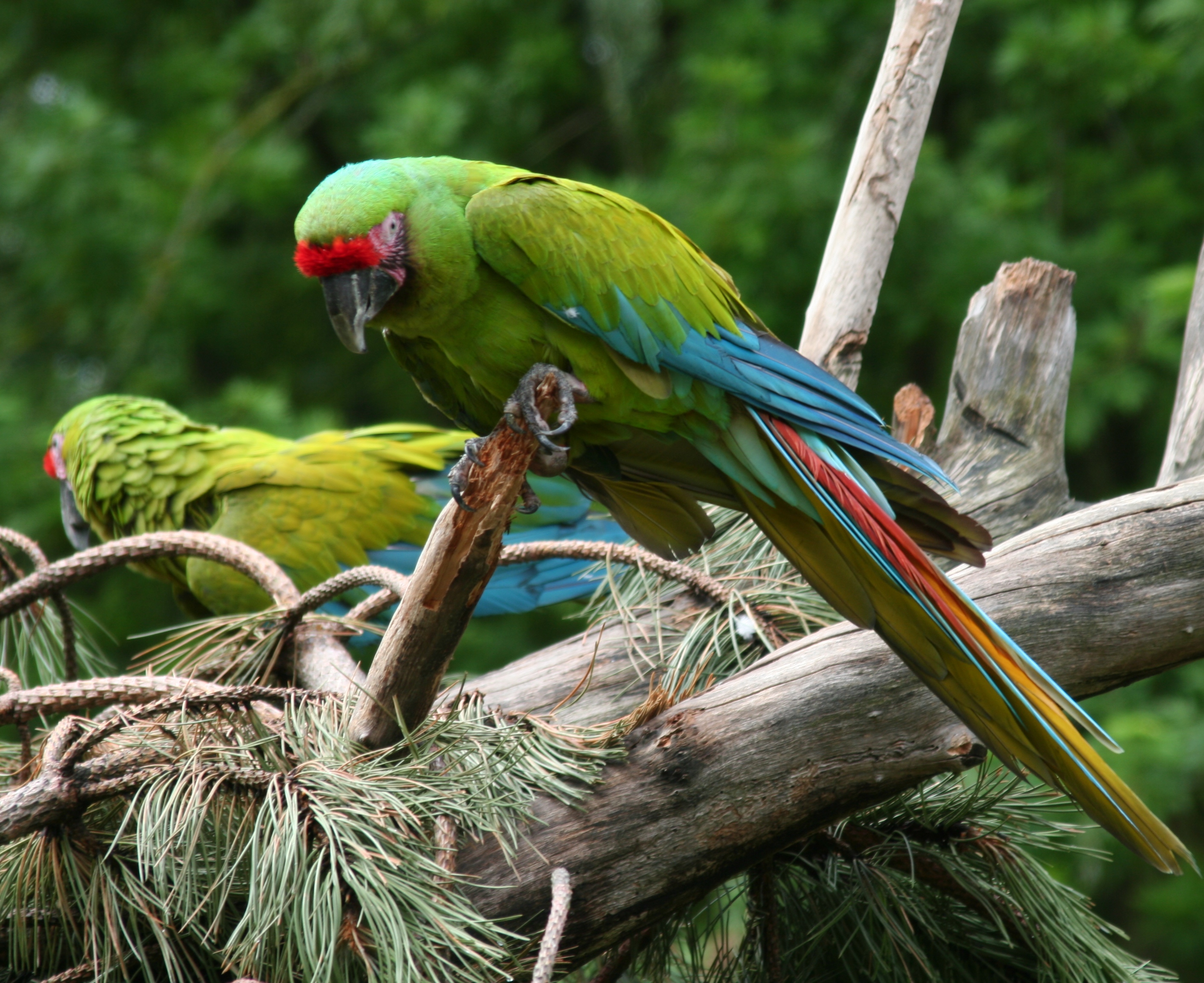
Great green macaw, or Buffon's macaw, or Great military macaw(Ara ambigua)
Phylum —chordata
Class — aves
Order — psittaciformes
Family — psittacidae
Genus – ara
Appearance
Great green macaws are the largest parrots in their natural range, the second heaviest macaw species, and the third heaviest parrot species in the world. This species averages 85–90 cm (33.5–35.5 in) in length and 1.3 kg (2.9 lb) in weight. They are mainly green and have a reddish forehead and pale blue lower back, rump and upper tail feathers. The tail is brownish-red tipped with very pale blue. The bare facial skin is patterned with lines of small dark feathers, which are reddish in older and female parrots. Juveniles have grey-colored eyes instead of black, are duller in color and have shorter tails which are tipped in yellow.
Habitat
It is a Central and South American parrot found in Nicaragua, Honduras, Costa Rica, Panama, Colombia and Ecuador.
Behavior
Birds are usually observed in pairs or small groups of up to four to eight birds, very rarely more. In Costa Rica it breeds in the lowlands, but disperses to higher elevations afterwards, gathering together in flocks which migrate in search of food. In Costa Rica these flocks usually consist of up to 18 birds. This species rests and forages in the upper areas of the canopy. In Nicaragua these macaws are notably unwary of humans and when feeding will often allow a person to come quite close to them.
Diet
Great green macaws feed on various seeds, fruits, hard-shelled nuts and flowers. Their principal food source is the fruit of the Swamp Almond Tree (Dipteryx panamensis). They have large, strong beaks that enable them to crack open even the hardest nuts to retrieve the seeds inside.
Reproduction
The breeding season varies by location. Populations occurring in Ecuador generally breed between June and November.
They usually nest in the cavities of dead trees, such as Cuipo Trees (Cavanillesia plantanifolia) or Mountain Almond Trees (Dipteryx panamensis).
The average clutch consists of 2-3 white eggs, which are incubated by the female for about 26 days to hatching. Hatchlings are blind, naked and completely dependent on parental care; they weigh about 0.8 oz (23 g).
The chicks are fed by both parents and leave the nest when they are about 12-13 weeks old. By the time they fledge, they usually weigh between 32.5-34.5 oz (930 - 985 g).
This species can live to 50–60, to a maximum of 70, years of age.
In captivity
A 50 ft long enclosure along with lots of natural perches like tree trunks, eucalyptus or pine branches are perfect for the macaw. A barrel sizing 21in x 36in is good as a nest box.Since these birds are endemic to humid places, maintain that basic criteria by keeping the species in preferably cooler places.
The macaw likes to live in small groups and usually stay content with themselves. Its natural tendency to fly high is often observed inside the cage as well.
Its strong bill is apt for breaking hard nuts so give the bird almonds, pine nuts, peanuts, walnuts. Fruits like orange and banana are also good options.
Provide big chewable toys inside the cage for the entertainment and exercise of the bird.
For the necessity cleanliness, place an overhead mister that will make the bathing easier and enjoyable. Also, make sure, the food bowls and water bowls are clean and tidy.
 Russian
Russian
 English
English


















